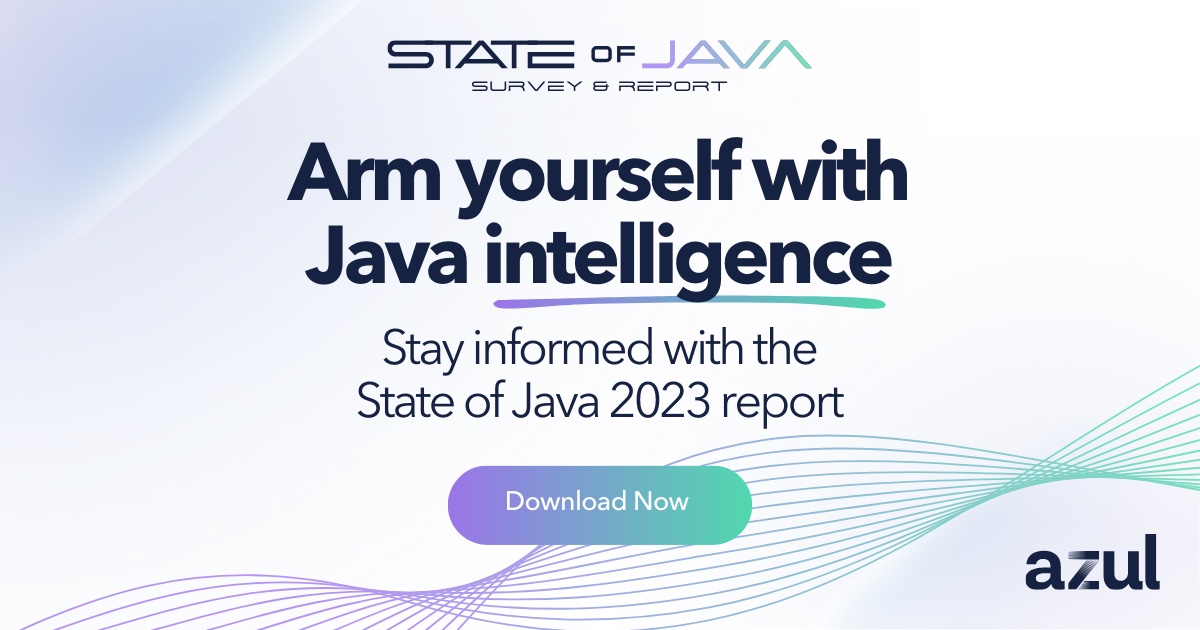
Azul State of Java Survey and Report 2023

JIT Performance: Ahead-Of-Time versus Just-In-Time

Bringing Microsecond Latency and Real-Time Transaction Processing to the Cloud


Cloud elasticity is the ability to adjust cloud computing resources like network bandwidth, storage, compute power, etc.) based on demand and usage. By fine tuning resources up and down based on demand, companies can efficiently allocate resources based on the just-in-time situation or scenario. In general, elasticity is a key driver of cloud adoption, and an ideal requirement that underpins many performance-driven applications today that serve millions of users with rapid spikes in demand.

There are five steps when considering how to scale your company’s use of cloud elasticity.
But how does elasticity in cloud computing work with Java applications?
Traditionally, Java development applications were optimized for vertical stacks, but cloud environments can scale horizontally (distribution across multiple machines). So, production Java runtimes are no longer limited by compute capacity and local resources. A Cloud Native Compiler empowers Java development applications to improve resource utilization, reduce costs and drive efficiency.
A cloud native compiler is a compiler that compiles code in a distributed and scaled manner that is optimized for cloud computing environments.
Utilizing Azul’s Cloud-Native Compiler, both microservices-based and cloud-native Java applications can benefit from performance enhancements since the compiler separates Just in Time (JIT) compilation from the Java Virtual Machine (JVM). This cloud centric approach introduces elasticity efficiency since it leverages previously optimized compilations across JVMs.
Today’s JVMs are isolated; they are built to run workloads using their own functionality. They are unaware of anything outside of themselves; JVMs have no memory of what happened before they started, they leave nothing behind for future runs, they are ignorant of what their neighbors or peers are doing, and they do not leverage intelligence or capabilities that their environment may have.
JVMs are also religiously self-reliant. Only local resources are used in running an application and in conducting whatever functions the JVM must perform. This approach necessarily involves tradeoffs. Resources used to run a given application compete with resources used to perform internal JVM functions designed to support the execution and improve application performance and efficiency over time.
The assumption of elastic and abundant cloud resources allows us to re-evaluate which functions must be performed in isolation by the JVM and which can be outsourced to external resources. While various elements within the JVM lend themselves well to an outsourced approach, JIT (just in time) compilation is an obvious choice.
By shifting the heavy lifting of optimization to a scalable and efficient resource, a cloud-native compiler makes powerful optimizations both practical and affordable. These optimizations result in faster application code and improved JVM performance, which in turn translate to more efficient application execution and reduced cloud infrastructure costs for running a given workload.
There are many cloud elasticity benefits of using a Cloud Native Compiler.
1. Prevent over-provisioning and under-provisioning cloud resources
By scaling up and down to shift JIT compilation to cloud resources, you can prevent over-provisioning and under-provisioning.
Overprovisioning occurs when you scale up cloud instances when there’s no little or no demand, leading to expenditures. By Goldilocks rightsizing instances, you prevent incurring costs that are only used for a tiny part of the lifecycle.
Under-provisioning occurs when there’s a surge of unexpected demand for your infrastructure and you experience outages and high latency due to high traffic.
2. Receive better application performance
Second, you receive better application performance across a vast application range and workloads including:
3. Get containers up to full speed faster
A cloud native compiler helps with faster startups times because they enable code compilation task parallel processing, leveraging multiple resources in the cloud as well as caching of commonly used libraries and dependencies. This results in faster code compilation times and reduced wait times.
A cloud native compiler is a compiler that compiles code in a distributed and scaled manner that is optimized for cloud computing environments.
Utilizing Azul’s Cloud-Native Compiler, both microservices-based and cloud-native Java applications can benefit from performance enhancements since the compiler separates Just in Time (JIT) compilation from the Java Virtual Machine (JVM). This cloud centric approach introduces elasticity efficiency since it leverages previously optimized compilations across JVMs.
With Cloud Native Compiler, JVMs offload the heavy work of compilation to a scalable, dedicated service that allows customers to serve the same load with smaller client servers and assists in cost stabilization for everyday cloud operations.
In summary, if you’re seeking elastic deployment for your cloud computing environment, Cloud Native Compiler can help you optimize resources to reduce rising cloud costs, improve application and workload performance and accelerate operations. Discover how elasticity is just the start to cloud cost optimization and ROI.
A truly superior Java platform that can cut your infrastructure costs in half.
